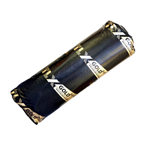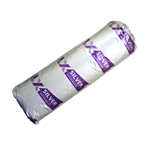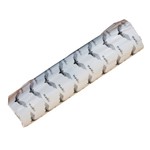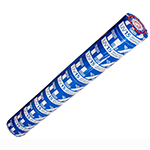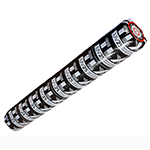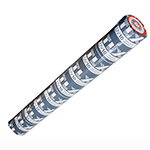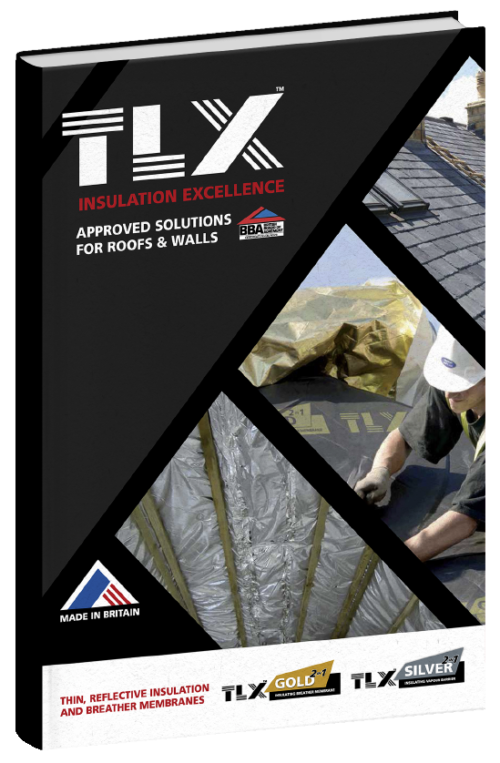How to Insulate a Cold Deck Roof With TLX Silver
Cold deck roofs are the most commonly used roof types in residential properties in the UK. This is because cold deck roofs are generally faster and cheaper to install than warm deck roofs. TLX Silver insulation can be used to insulate a cold deck roof.
A cold deck roof is a roof where the roof insulation sits directly on top of the  ceiling plasterboard. The rest of the roof is then constructed above it, including the decking and roof membrane. That doesn’t mean that a cold deck roof will feel cold inside the property, it just means that everything above the layer of cold deck insulation will feel cold.
ceiling plasterboard. The rest of the roof is then constructed above it, including the decking and roof membrane. That doesn’t mean that a cold deck roof will feel cold inside the property, it just means that everything above the layer of cold deck insulation will feel cold.
A cold deck roof differs from a warm deck roof because a warm deck roof has insulation above the rafter level, meaning the rafter space below is comparatively warm.
So how do you insulate a cold deck roof? And why is TLX Silver the best roof insulation for your cold deck roof? Here’s everything you need to know:
What is Cold Deck Roof Insulation?
Cold deck roof insulation is a unique and very common way to insulate a roof. The insulation in a cold deck roof is installed at ceiling level, therefore the void is at a colder temperature than the room below during colder weather.
Both cold deck and warm deck roof insulations have their advantages and disadvantages. For example, warm roof insulation ensures the entire roof structure is insulated, meaning a warm deck roof is more energy efficient than a cold roof. But cold deck roofs tend to be cheaper and to install and offer long-term savings through reduced energy bills and maintenance expenses.
Some of the other benefits of choosing a cold deck roof installation are that cold roofs maintain a consistent indoor temperature, reducing drafts and improving occupant comfort, they can contribute to prolonged roof durability, and proper ventilation in cold roofs helps manage moisture, preventing condensation, mould growth, and structural damage.
maintain a consistent indoor temperature, reducing drafts and improving occupant comfort, they can contribute to prolonged roof durability, and proper ventilation in cold roofs helps manage moisture, preventing condensation, mould growth, and structural damage.
A cold roof isn’t actually as cold as the name suggests. It simply means that the roof isn’t protected above the lower insulation layer, meaning that it is colder on the outside than it is on the inside. Because you only need to insulate your property up to the rafter level, using this method of installing a cold deck roof is a relatively low-impact way to insulate your roof and ensure that your home is protected against the elements, both during the heat of the summer and the cold of the winter. Another benefit of choosing a cold deck roof rather than a warm deck one is that the cost of a warm roof is generally higher than a cold roof. A warm roof requires insulation to be installed above the roof deck, which adds to the material and labour costs. In contrast, a cold roof lacks insulation and is typically less expensive to construct. This is good news for homeowners on a budget who want to insulate their home as effectively as possible for as low a price as possible.
How to Install TLX Silver in a Cold Deck Roof
TLX Gold multifoil insulation is best used for warm deck roof installation and TLX Silver multifoil insulation is best used for cold deck roof installation. Because they are different types of roof insulation, they require different products and build-ups for the most effective installation. TLX Silver 2-in-1 insulating vapour barrier is the ideal material for cold roofs because it manages condensation risk whilst providing an excellent thermal benefit.
Not all cold deck roof insulations will use a multifoil insulation such as TLX Silver. Often this decision is driven by price with different grades of insulation materials available at different price points and of varying performance levels. But the fact is that TLX Silver may be slightly more expensive than inferior products but it also offers a much better level of thermal insulation performance. What’s more, whilst PIR board and mineral wool are the insulation materials most commonly used in roof insulation projects, they can’t reach building regulations on their own unless you use significant volumes that would make your installation very bulky. To reach building standards a hybrid system should be your best approach. This system will
Often this decision is driven by price with different grades of insulation materials available at different price points and of varying performance levels. But the fact is that TLX Silver may be slightly more expensive than inferior products but it also offers a much better level of thermal insulation performance. What’s more, whilst PIR board and mineral wool are the insulation materials most commonly used in roof insulation projects, they can’t reach building regulations on their own unless you use significant volumes that would make your installation very bulky. To reach building standards a hybrid system should be your best approach. This system will
use cheaper materials such as PIR board or mineral wool alongside high-quality
multifoil insulation such as TLX Silver and this will ensure it achieves lower U values.
TLX Silver is the best multifoil insulation for the job because it includes a high-quality vapour barrier as well as a waterproof protective layer. This will prevent any moisture from entering the rafter space from below, ensuring that your property remains watertight. It will manage your condensation risk whilst also using shiny reflective layers to reflect infrared radiation back into the house and prevent heat from radiating out into the environment.
If your rafters are shallow, then TLX Silver will ensure that you are more likely to reach thermal efficiency with your roof. Regardless of the depth of your rafters, TLX Silver is thin enough to roll out underneath them. You simply need to roll out your TLX silver multifoil insulation layer.
What are the Four Simple Steps for Using TLX Silver in a Cold Deck Roof Insulation Project?
|
|
|
|
TLX Silver is the ideal multifoil insulation for a cold deck roof insulation project. It is effective, efficient, and easy to install. But it’s important to note that if you are using cold deck insulation on a flat roof, cold flat roof insulation requires more work. The thermal efficiency isn’t always as good as with warm roof insulation, which is why it’s so important to invest in the most efficient and highest quality materials, such as TLX Silver.
Do you Require a Bespoke Solution?
We would love to hear from you. Our helpful team of product experts are on hand to help with bespoke solutions and U-Value calculations. Simply call 01204 674 730. Also, our LABC-approved solutions guide has a wide range of pre-calculated solutions. You can download your free copy from the footer below.
Sample Pack Request
Error: Contact form not found.

